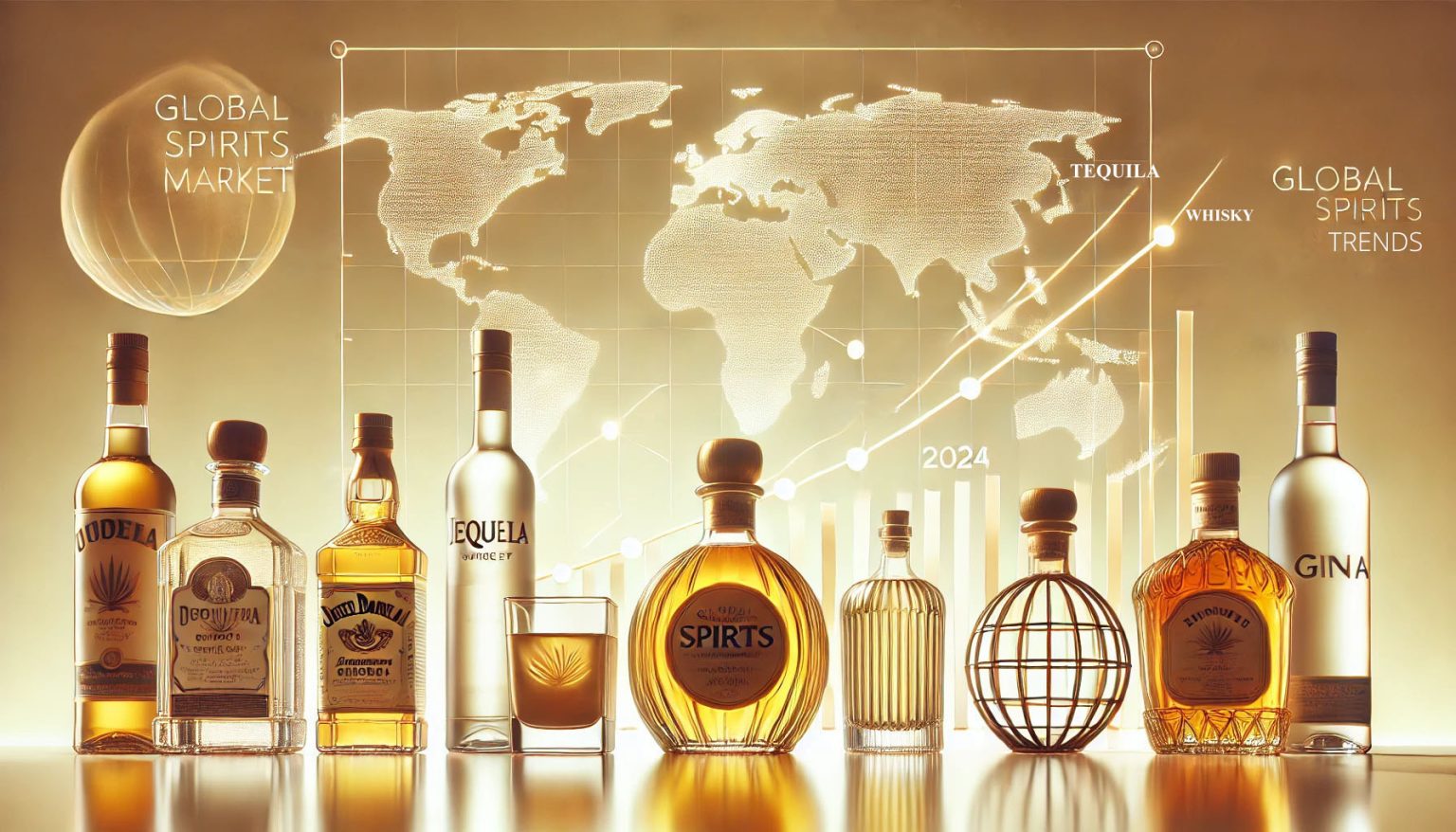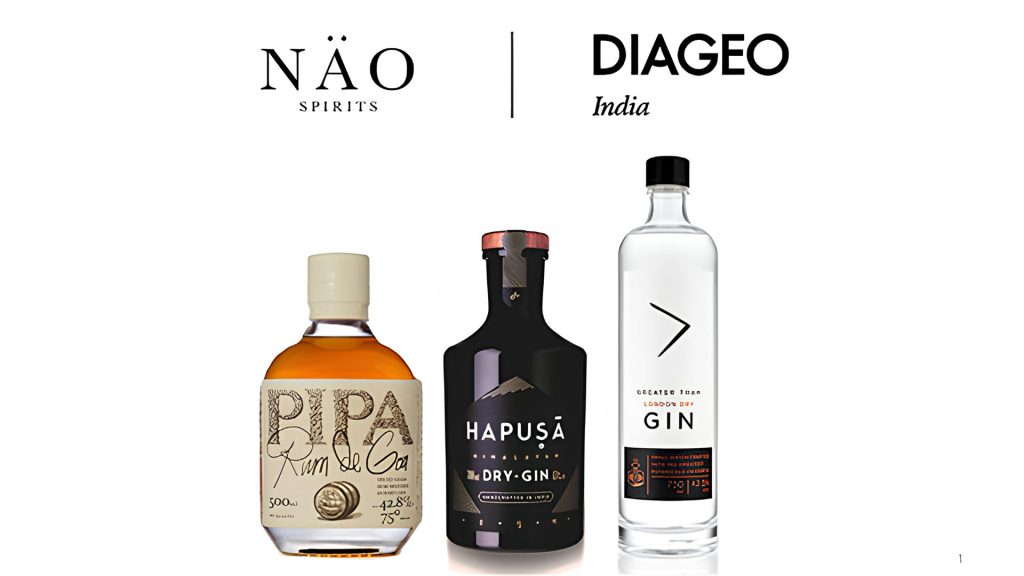The global spirits industry is navigating a complex landscape in 2025, with varying performances across key markets. The latest financial disclosures from Diageo (2025 interim results) and Pernod Ricard (H1 FY25 sales and earnings) provide valuable insights into shifting consumer preferences, regional market strengths, and the spirits categories driving growth.
1. Market Performance: Growth vs. Stagnation
Diageo: Resilience Amid Market Volatility
Diageo reported $10.901 billion in net sales for the first half of fiscal 2025, reflecting 1% organic growth but a 1% decline in reported net sales due to unfavorable foreign exchange effects.
- North America: Organic net sales remained flat, with volume declining 3%, offset by price/mix gains of 4 percentage points.
- Europe: Organic net sales increased 3%, driven by strong growth in Guinness (+17%) and resilience in spirits categories.
- Asia-Pacific: Organic net sales declined 4%, with China experiencing weakness in Scotch whisky sales, leading to a 6% organic decline in operating profit.
- Latin America & Caribbean: Organic net sales increased 5%, with Brazil up 12%, fueled by strong performance in Scotch whisky and tequila.
- Africa: Organic net sales declined 3%, with Guinness growth partially offsetting challenges in other categories.
Diageo’s operating profit declined 4.9% on a reported basis and 1.2% on an organic basis, attributed to higher staff costs, strategic investments, and adverse currency fluctuations.
Pernod Ricard: Asia Weakness, Resilience Elsewhere
Pernod Ricard reported €6.176 billion in net sales for H1 FY25, a 4% organic decline and a 6% reported decline due to unfavorable currency impacts.
- Americas: Net sales declined 4%, driven by a 7% decline in the U.S., where spirits demand remained soft.
- Asia-RoW: Net sales declined 5%, with China plummeting 25%, significantly impacting Martell and Royal Salute.
- India: Grew 6%, supported by strong Jameson and Ballantine’s performance.
- Europe: Sales excluding Russia increased 1%, with growth in France, Poland, and Ireland.
- Global Travel Retail: Declined 9%, mainly due to weakened demand in China and Korea.
Despite these challenges, Pernod Ricard achieved +65bps organic operating margin expansion, driven by strict cost discipline and revenue growth management.
2. Key Spirits Categories Driving Growth
Whiskey: A Tale of Two Trends
- Diageo’s success in North America was driven by Crown Royal (+3%) and Don Julio (+8%), reflecting continued consumer interest in high-end whiskey and tequila.
- Pernod Ricard saw Jameson’s global growth (+6%), but Scotch brands like Chivas Regal faced headwinds in China, impacting overall whiskey sales.
Tequila & Agave-Based Spirits: Still in High Demand
- Tequila remains one of the fastest-growing spirits categories.
- Pernod Ricard’s Olmeca and Avión brands also posted positive sales trends, recorded double-digit growth of 10% in European markets, based on organic growth excluding currency fluctuations. These two brands benefited from the continued trend of premium agave spirits, particularly in Western and Northern Europe.
- Diageo: Don Julio grew 50%, leading tequila expansion, while Casamigos saw a 21% decline. As for Casamigos‘s 21% decline, the primary reasons include challenges in the brand’s global expansion, especially in European markets, where it faced increased competition. While the brand’s performance remains stable in the U.S. market, slower growth in international markets has been a key factor contributing to this decline.
Gin and Other Spirits: Varied Performance
- While gin’s rapid rise has stabilized in some markets, Pernod Ricard’s Malfy Gin grew by 5% in key European regions.
- Ready-to-drink (RTD) beverages remain a bright spot, with Diageo leveraging brands like Gordon’s and Smirnoff, which helped RTD sales grow by 7% year-over-year. Pernod Ricard’s RTDs saw +15% growth, fueled by Absolut RTDs.
3. Regional Insights: Diverging Growth Patterns
North America: A Market in Transition
- Both Diageo and Pernod Ricard reported flat to negative performance in the U.S., reflecting changing consumer habits and economic pressures.
- Diageo’s U.S. sales remained flat, with premium brands like Don Julio and Crown Royal performing well.
- Pernod Ricard’s U.S. sales dropped 7%, with Jameson showing resilience but other brands facing challenges.
- Super-premium and ultra-premium spirits remain resilient, even as volume sales decline in the mainstream segment.
Europe: Rebound with Premiumization
- Pernod Ricard’s European sales (ex-Russia) grew 1%, driven by strong Scotch whisky performance.
- Diageo’s performance in Europe benefited from strong Scotch whisky demand and cocktail culture growth, saw a 3% organic sales increase, with Guinness leading.
Asia-Pacific: A Mixed Bag
- China remains a challenging market, with both companies reporting slower sales. Pernod Ricard’s -25% decline in China underscores the volatility in the region, heavily impacting Martell.
- Diageo’s performance in the Asia-Pacific region declined by 4%, primarily due to weakness in the Chinese market. In China, Johnnie Walker sales fell by 6%, reflecting softer demand for premium Scotch whisky.
- India and Southeast Asia provided growth opportunities, particularly for premium whisky and gin, with Diageo reporting 5% growth in India.
4. Industry Trends: What’s Next?
- Premiumization Continues: Consumers are prioritizing quality over quantity, favoring high-end spirits despite economic pressures.
- Evolving Consumer Preferences: The shift toward agave-based spirits, low-alcohol options, and ready-to-drink products is reshaping the landscape.
- Geopolitical & Economic Uncertainty: Fluctuations in global trade policies and inflation remain key challenges. China’s economic slowdown and U.S. market softness remain challenges.
Conclusion
The latest reports from Diageo and Pernod Ricard highlight a divergent spirits market, with some regions and categories thriving while others face headwinds. As premiumization continues and consumer preferences evolve, strategic brand positioning and market adaptability will be crucial for sustained growth in 2025 and beyond.
References


